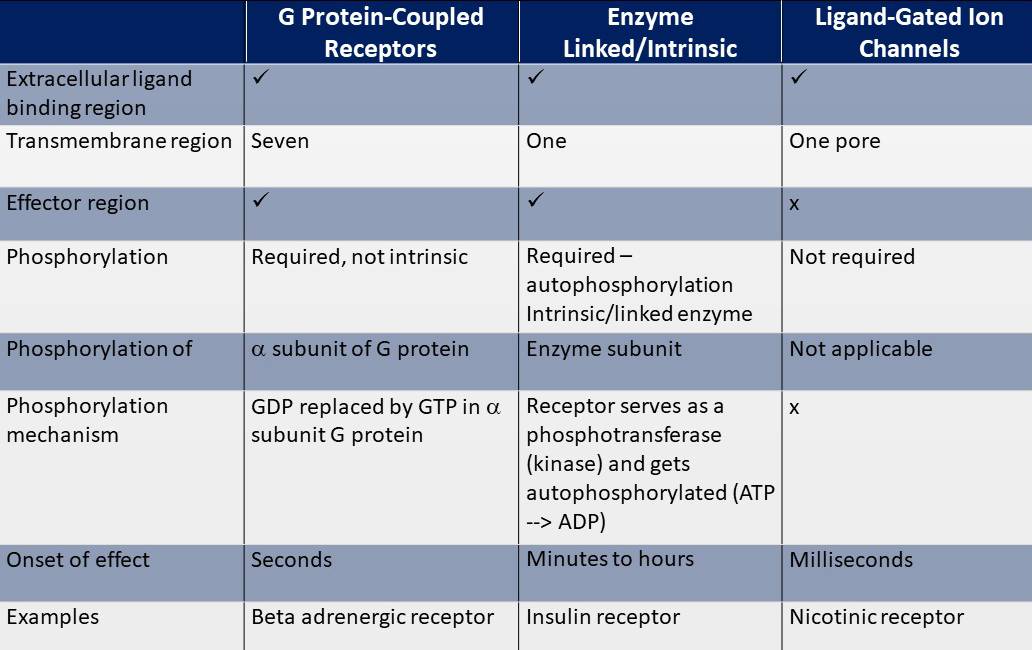Receptors can be classified in various ways. Based on their function they can be classified as either “cargo” type receptors or signal (transduction) receptors. Cargo-type receptors deliver key metabolic substrates, nutrients, and minerals to cells. In general, these receptors are present in clusters in pits and are endocytosed by the formation of vesicles, which are pinched off from the surface. Once internalized, the receptors dissociate from their ligands when they are exposed to lower pH in endosomes. Thereafter, the receptor very often folds back on itself to obtain a closed conformation and recycles to the cell surface.
Signal receptors transmit signals from the extracellular space into the intracellular area. Based on their location, these signal receptors are classified as cell surface receptors or nuclear/cytoplasmic receptors. The cell surface receptors can be broadly divided into G protein-coupled receptors (GPCRs), receptors with enzymatic activity (intrinsic or linked), and ligand-gated ion channels (LGICs).
GPCRs couple with G proteins in the cytosol. GPCRs are characterized by the presence of an extracellular amino terminus, an intracellular carboxy-terminal tail, and a shared structural core composed of seven transmembrane α helices that weave in and out of the membrane, thus forming three intracellular and three extracellular loops. G proteins are heterotrimeric proteins that comprise an α, β, and γ subunits. Agonist-activated GPCRs promote the dissociation of GDP bound to the α subunit of heterotrimeric G proteins and its replacement by GTP. Gα and Gβγ subunits can then activate numerous downstream effectors.
Receptors with intrinsic/linked enzymatic activity include four known types of receptors with intrinsic enzyme activity: Receptor tyrosine kinase (insulin receptor); Receptor-like tyrosine phosphatases (CD45 protein); Receptor serine/threonine kinases (TGF-b receptor); and Receptor guanylyl cyclases (atrial natriuretic peptide receptor); and two with linked enzymatic activity: Tyrosine kinase associated receptors (prolactin) and histidine kinase associated receptors (not seen in animal cells).
A unique feature for activation of these 6 receptor classes is ligand-induced receptor dimerization or oligomerization. As a result of the juxtaposition of the intracellular kinase domains, it allows for autophosphorylation within the complex.
Receptor tyrosine kinases are the most common and widely distributed. The majority of these are receptors for growth factors such as epidermal growth factor (EGF), platelet-derived growth factor (PDGF), fibroblast growth factor (FGF), hepatocyte growth factor (HGF), nerve growth factor (NGF), and hormones such as insulin.
LGIC are a subclass of cell surface receptors that initiate cellular signaling by their intrinsic channel activities, which allow, upon activation by ligand binding, the rapid movement of ions across cell membranes. The acetylcholine receptor of the synapse, which has intrinsic sodium channel activity is an example of LGIC.
For more blogs, please visit: https://www.rxmd.com/insights

